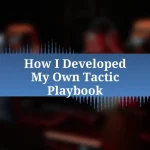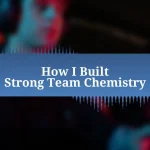Key takeaways:
- Aim is crucial for personal confidence and team success in Counter-Strike 2, affecting gameplay significantly.
- Mastering techniques like crosshair placement, flick shots, and burst firing can drastically improve aiming skills.
- Utilizing aim training software and optimizing mouse settings can enhance accuracy and overall gameplay experience.
- Regular gameplay analysis and maintaining a growth mindset are essential for continuous performance improvement.
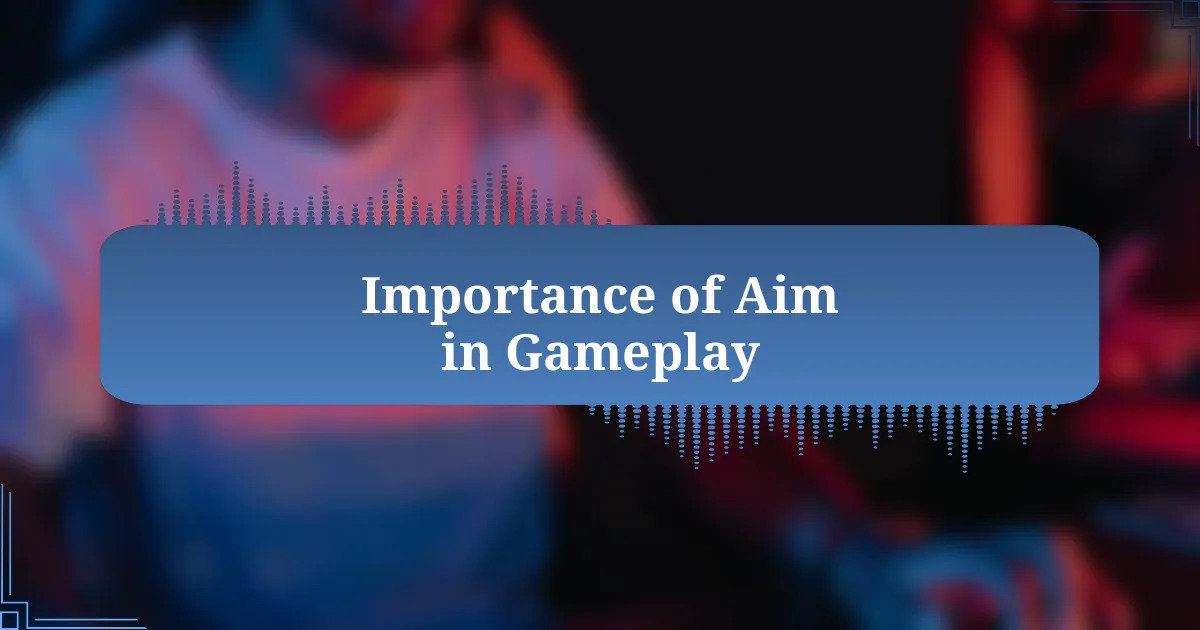
Importance of Aim in Gameplay
When I think about the importance of aim in Counter-Strike 2, I can’t help but recall those intense moments when precision makes all the difference between victory and defeat. Have you ever experienced that split-second rush when you realize you’ve just landed a perfect headshot? It’s a confirmation that all your practice is paying off, and it fuels the excitement of the game more than anything else.
Good aim isn’t just about hitting your targets; it’s about building your confidence and influencing your overall gameplay. I remember a time when my aim was shaky; every missed shot felt like a weight on my shoulders, creating a feedback loop of frustration. Once I improved my accuracy, I felt liberated, able to focus more on strategy and team dynamics, rather than panicking over my performance.
Moreover, aim directly impacts your team’s success. Picture this: you’re in a high-stakes match, and your teammates are relying on you to take out the enemy. Your ability to shoot accurately can turn the tide of the game. Have you felt the pressure in those crucial moments? It’s a testament to how essential honing your aim is—not just for personal satisfaction, but for the collective triumph of your team.
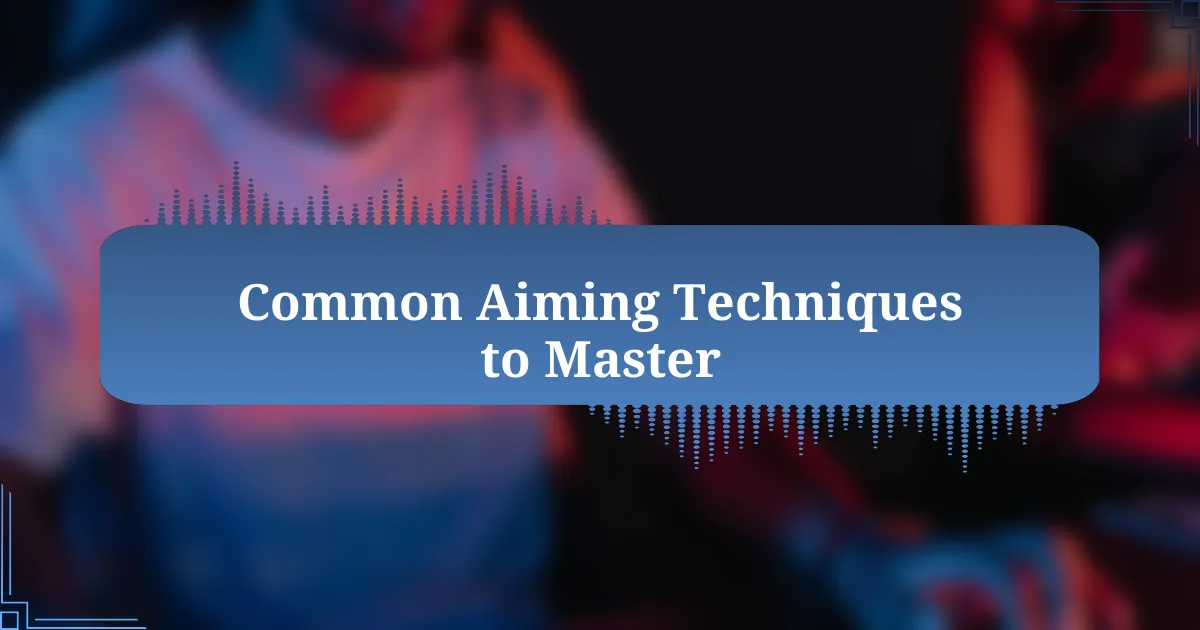
Common Aiming Techniques to Master
When it comes to enhancing your aim, mastering crosshair placement is crucial. I can think back to a match where I constantly adjusted my crosshair positioning, aiming at head level while peeking around corners. This simple shift not only helped me land more headshots but also turned my timing into a strategic advantage. Have you noticed how often players forget this key aspect? By keeping your crosshair in line with potential enemy heads, you save precious milliseconds.
Another technique to sharpen your aim is practicing flick shots, which are essential for unexpected encounters. I vividly remember struggling against opponents who caught me off guard, but through focused practice in aim training maps, I began to develop quicker reactions. The satisfaction that comes from executing a perfect flick can’t be overstated—it’s like a mini victory within the game. How often do you practice your flick shots? The more you put in the time, the more naturally it becomes.
Lastly, I recommend incorporating burst firing into your gameplay. Early on, I fell into the rhythm of holding down my trigger, but I realized that taking controlled bursts yielded greater accuracy. One pivotal match reminded me of this lesson; I switched to burst firing and managed to secure a clutch round by eliminating multiple enemies with precision. It’s thrilling to discover that small adjustments in your firing technique can lead to significant improvements in your overall aim. Have you thought about how your shooting style could affect your game?
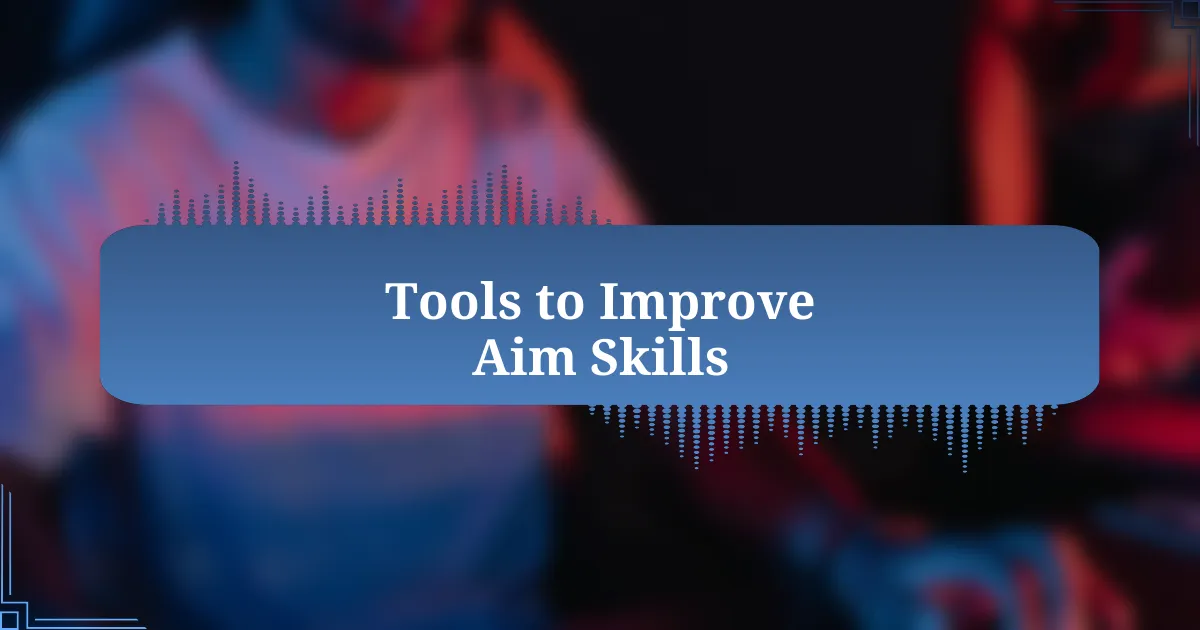
Tools to Improve Aim Skills
When I think about the tools available to enhance aim skills, aim training software stands out as a game-changer. I remember downloading an aim trainer specifically designed for CS2 and dedicating some of my practice time to it. Those sessions felt a bit monotonous at first, but over time, the improvements were undeniable. Have you ever tried aim trainers, like Aim Lab or KovaaK’s? They provide structured drills that target specific aspects of aiming, such as tracking and flicking, which translated beautifully into my gameplay.
Another invaluable tool I’ve encountered is the use of mouse settings optimization. For the longest time, I didn’t realize how much my DPI (Dots Per Inch) settings affected my accuracy. After adjusting my mouse sensitivity to find that sweet spot, I noticed smoother movements and more controlled shots, which took my gameplay to the next level. It’s fascinating how such a seemingly small change can make you feel like you’ve unlocked a hidden level in your skill set. Have you explored your mouse settings? You might be pleasantly surprised by the difference it can make.
Lastly, don’t underestimate the power of community resources and tutorials. I recall watching a video by a professional player who dissected their aiming techniques, and it completely reshaped my approach to combat encounters. Engaging with others through forums or streaming platforms can offer fresh perspectives and insight that you might not have considered before. How often do you tap into these community resources? They can provide both motivation and practical advice as you work on improving your aim.
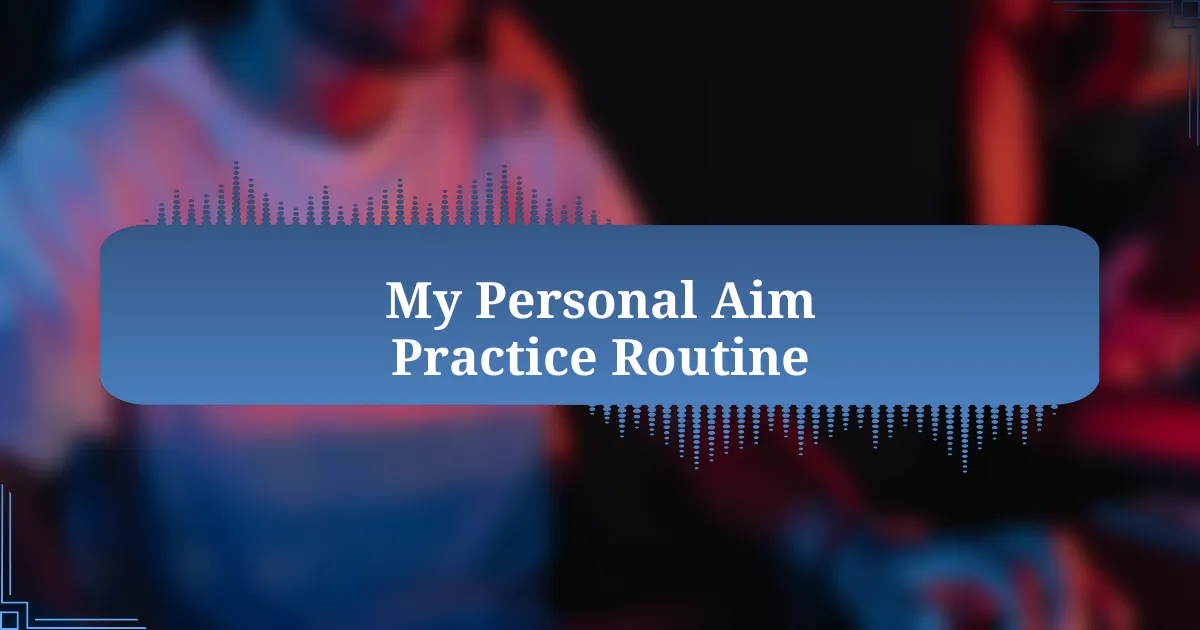
My Personal Aim Practice Routine
I’ve developed a personal aim practice routine that has become essential to my growth in Counter-Strike 2. Each day, I dedicate about 30 minutes to focused drills on an aim trainer. Initially, the progress felt slow, but I vividly remember the day I hit a new personal best; it was exhilarating and motivated me to keep pushing my limits. Have you ever experienced that rush of achieving something you once thought was out of reach?
In addition to aim trainers, I incorporate scenarios that mimic actual game conditions. For instance, I often use deathmatch servers to practice against real players, refining my reaction times and decision-making under pressure. The thrill of these matches not only sharpens my aim but also keeps me engaged. I still recall a clutch moment in a recent match where my precise aiming saved the game for my team; those experiences are priceless.
Moreover, I make it a point to analyze my gameplay regularly. After each session, I review my performance, pinpointing my strengths and areas needing improvement. This reflective practice has been instrumental in my routine. It often leads me to wonder, how much more could I improve if I consistently monitored my progress? The insights I gain from this analysis, combined with my aim drills, have transformed my practice into a comprehensive strategy for continuous improvement.
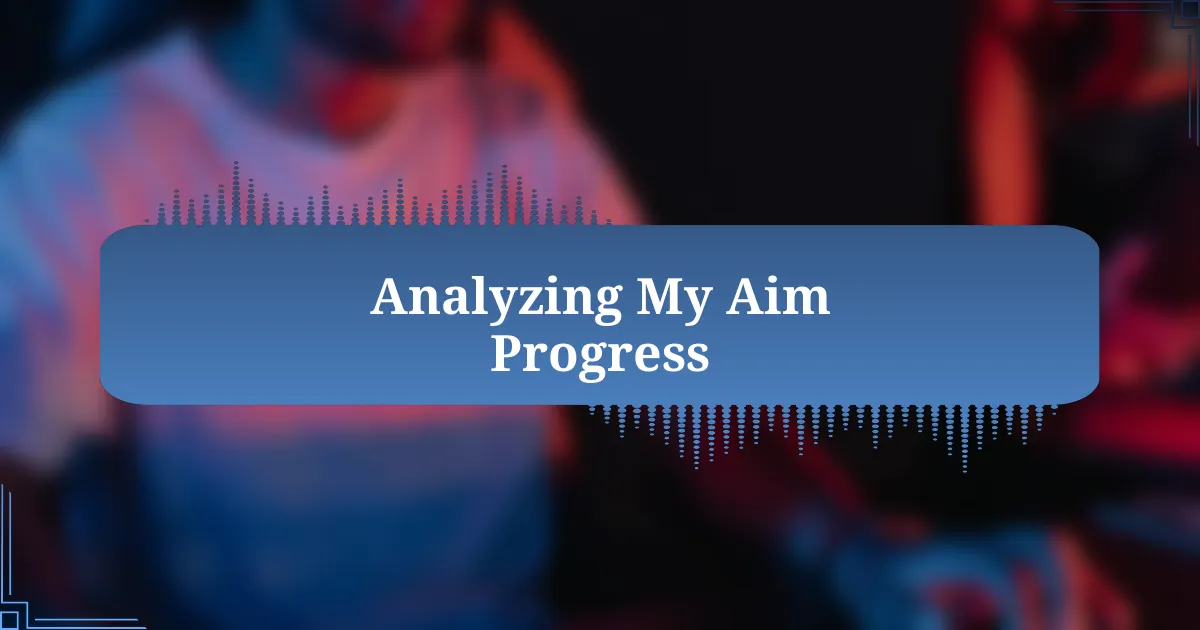
Analyzing My Aim Progress
Analyzing my aim progress is a crucial step in my overall development as a player. After each practice session, I take time to reflect on what worked and what didn’t. One instance that stands out to me was when I realized I was overthinking my shot placement while in a tense situation. By identifying this, I shifted my focus back to trusting my instincts, which greatly improved my performance.
I also keep a log of my progress, noting down my accuracy rates and the types of shots I excel in. It was surprising to see how much my flick shots had improved over the weeks. Tracking these metrics has been eye-opening; it serves as a motivating reminder of how far I’ve come. Does anyone else feel a sense of pride in seeing tangible evidence of their hard work?
Delving deeper into my aim analysis often reveals patterns that I hadn’t noticed during gameplay. For example, I discovered that my aim falters significantly when I play late at night due to fatigue. Learning this has taught me to adjust my schedule to practice during peak concentration hours. I find this kind of self-awareness not only enhances my gameplay but also enriches my experience in the game as a whole.
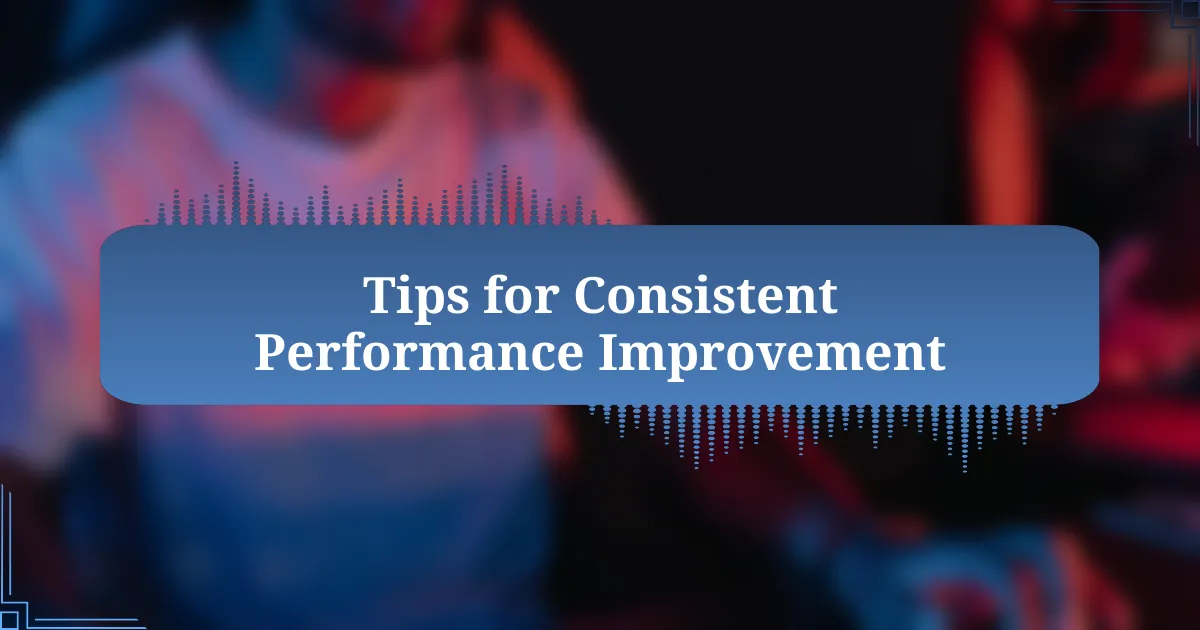
Tips for Consistent Performance Improvement
Consistent performance improvement hinges on deliberate practice, and I can’t emphasize enough the power of focusing on specific skills. One thing I did was isolate my training sessions to work solely on my crosshair placement. I remember spending an hour just practicing against bots, forcing myself to keep my aim at head level. It felt monotonous at times, but I can tell you that this focused approach genuinely sharpened my instincts when under pressure.
In addition to targeted practice, I found that reviewing my gameplay footage was extremely beneficial. Watching myself play, I noticed recurring mistakes, like when I tended to spray my shots instead of being precise with bursts. This habit intrigued me; why was I so eager to let loose? Understanding the answer helped me implement a more strategic approach to my shooting in future matches. I often catch myself asking: how can I avoid making the same mistakes? Analyzing past games has given me the insight to tweak my strategies effectively, leading to far better performance.
Above all, nurturing a growth mindset has been pivotal in my progression. Rather than viewing losses as failures, I started to see them as opportunities to learn. For instance, there were matches where I’d finish at the bottom of the scoreboard, and instead of feeling disheartened, I took those moments to identify specific areas for improvement. It’s amazing how this shift in perspective not only kept me motivated but also allowed me to embrace challenges with excitement. What about you? Have you ever turned a setback into a stepping stone for success?












